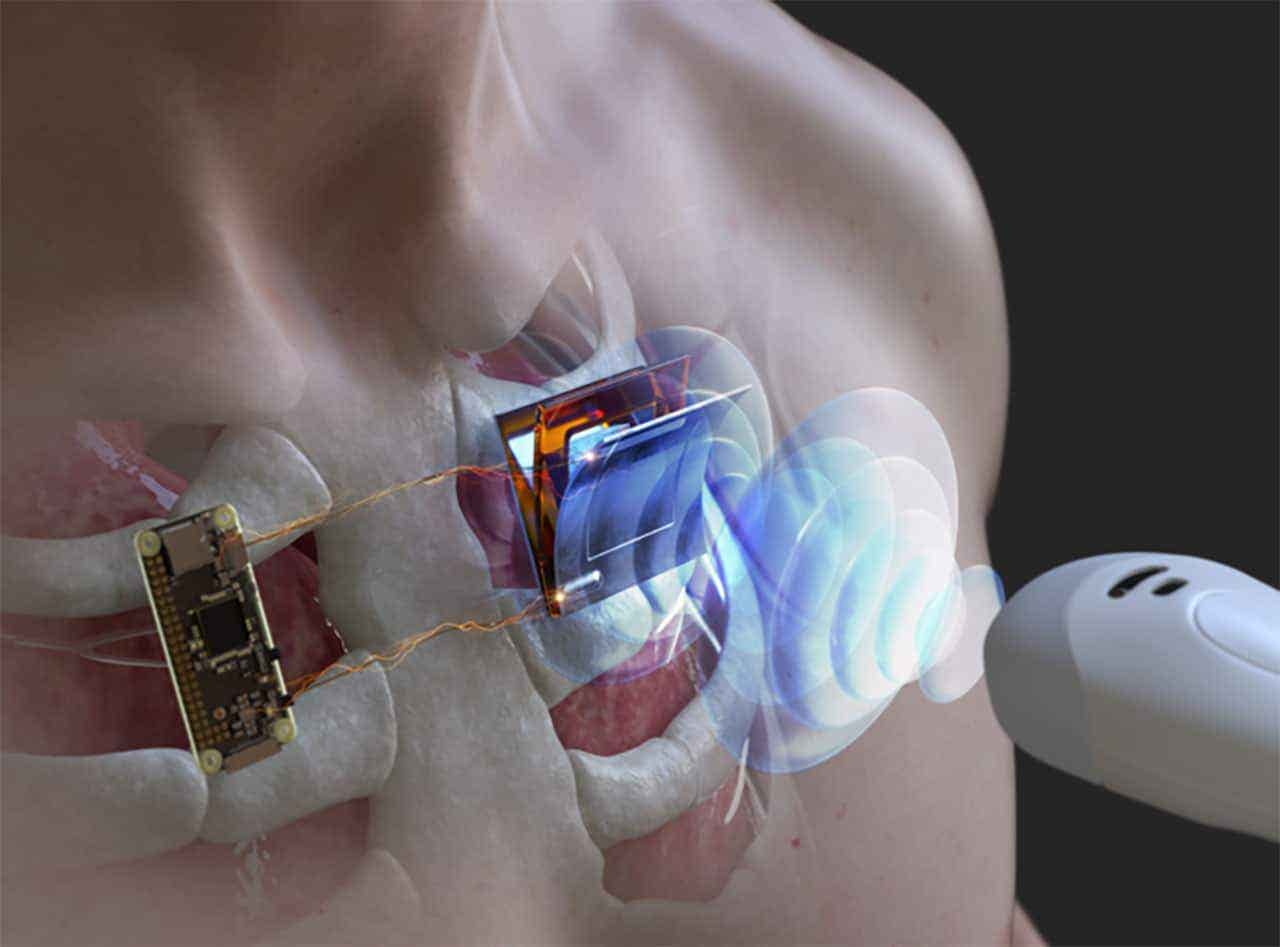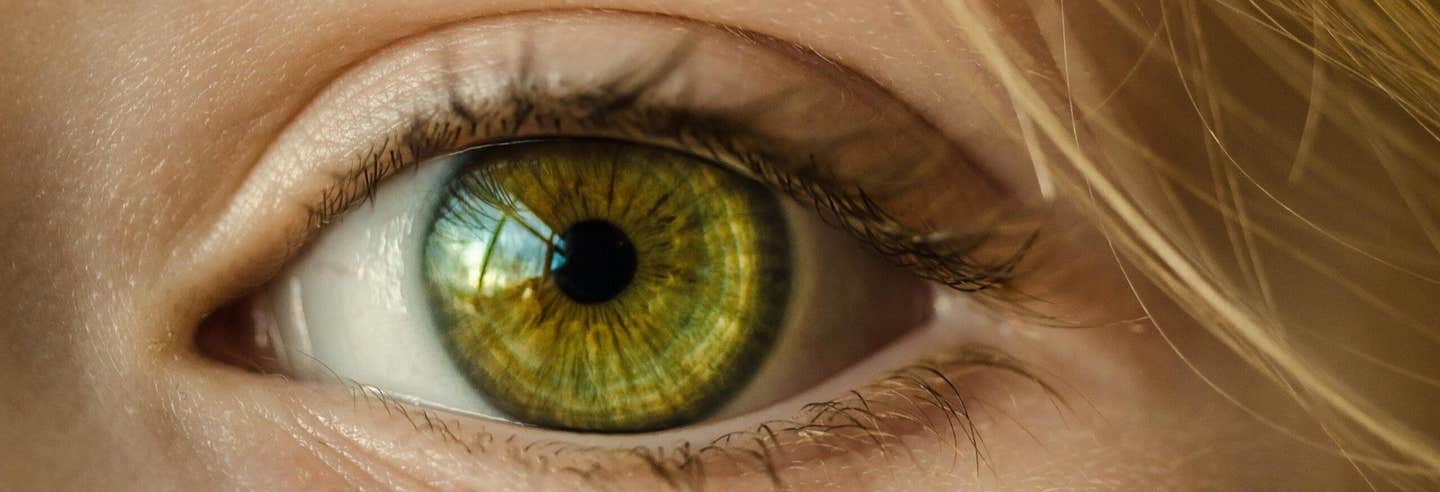Ultrasound technology brings wireless power to medical implants
A new ultrasound-powered flexible receiver may soon make it possible to wirelessly charge medical implants deep inside the body—no surgery required.

New flexible device uses ultrasound to power medical implants, offering safe and efficient wireless charging deep in the body. (CREDIT: Korea Institute of Science and Technology)
Medical implants and underwater electronics have long faced a common problem—how to power them safely and continuously. Traditional wireless charging methods like electromagnetic induction or radio frequency waves work fine for things like earbuds or phones.
But once you place a device inside the human body or underwater, those same methods run into serious issues. Energy transfer weakens through skin and tissue, and electromagnetic waves can create interference or even harm sensitive organs.
Ultrasound offers a way around those barriers. Unlike radio waves, ultrasound waves can pass more easily through biological tissue without being absorbed or causing damage. They also don’t rely on electromagnetic fields, making them safer for the human body. This technology is now being used to wirelessly power wearable devices and even implanted medical electronics.
A recent study from the Korea Institute of Science and Technology (KIST), in partnership with Korea University, and published in the journal, Advanced Materials, has introduced a flexible and biocompatible ultrasonic receiver. It can bend and stretch with the body while still converting sound waves into usable electrical power. This advancement is expected to power medical devices like pacemakers and neurostimulators, as well as underwater sensors and even marine drones.
Dr. Sunghoon Hur of KIST explained, “Through this research, we have demonstrated that wireless power transmission technology using ultrasound can be applied practically. We plan to conduct further research for miniaturization and commercialization to accelerate the practical application of the technology.”
How the New Receiver Works
The secret behind this innovation lies in a tiny, thin material called a triboelectric nanogenerator, or TENG. When paired with ultrasound waves, it converts mechanical energy into electricity. This process happens inside a stretchable and flexible layer made of advanced polymers.
Related Stories
- Breakthrough implantable sensors enable real-time inflammation monitoring
- 16-year-old’s breakthrough could revolutionize medical implants
- Groundbreaking eye implants can be used to treat diabetes and other diseases
The team built a structure called a dielectric-ferroelectric boosted ultrasonic TENG (US-TENGDF-B). This version solves common problems that past triboelectric generators faced—like being too stiff or producing too little energy. The new design stays effective even when bent or twisted. That’s important for medical devices that need to fit into curved parts of the human body.
Using this technology, the researchers managed to send 20 milliwatts of power across 3 centimeters underwater, and 7 milliwatts at a depth of 3 centimeters inside the human body. These amounts may sound small, but they’re enough to run many types of medical implants, including pacemakers and sensors.
The new material’s strength lies in its layered design. One key part is a mix of polyvinylidene fluoride-trifluoroethylene (P(VDF-TrFE)) and tiny particles of calcium copper titanate (CCTO). Together, these increase the charge capacity and improve how well the device captures energy from ultrasound.
The outside of the device is sealed in a clear, flexible coating made from PDMS, a silicon-based substance commonly used in medical tools. This outer layer makes the device waterproof and safe for the body.
Putting Flexibility to the Test
Medical implants must adapt to movement and shifting body positions. To test this, the researchers bent the ultrasonic receiver into different shapes—concave (curved inward) and convex (curved outward)—and checked how much energy it produced. In the concave position, energy output actually increased. This shape trapped more ultrasound waves and caused them to collide more frequently with the surface, boosting performance.
The convex position led to a small drop in output. That’s because the outer curve caused some tension in the PFA film, which reduced its ability to vibrate properly. Even so, the device performed well across all shapes, proving it can adapt to real-world use.
The overall thickness of the device is just 0.4 millimeters—about the width of four human hairs. That slim design allows it to fit snugly against tissues and organs, helping with long-term use in implantable systems.
The team also checked how well different materials generated power in triboelectric mode. By combining PU (a flexible plastic) with PFA (a tough, biocompatible film), they created strong electrostatic interactions. PFA is known for its high negative charge from fluorine atoms, while PU has positive charges from nitrogen-based compounds. Together, they form an ideal surface pair for producing energy.
The Science Behind the Boost
At the heart of this innovation is the improved triboelectric effect—where two materials generate electricity by rubbing or separating. But the researchers added an extra layer of science to boost performance: ferroelectric materials. These have tiny dipoles (mini electrical poles) that can be aligned in a certain direction using an electric field.
When the dipoles in the ferroelectric layer match the electric field of the triboelectric layer, energy generation improves. This happens especially when the dipoles are aligned downward. That specific alignment increases the internal electric field and enhances charge separation. Upward polarization weakens the field and reduces energy. Materials with no polarization perform better than poor alignments but don’t reach the same levels as the downward configuration.
Tests showed that the downward-polarized setup could generate up to 6.7 milliwatts of power and around 26 volts from a distance of 35 millimeters—enough for short-term charging of implantable batteries deep in the body. These numbers make the new system one of the best performers among flexible triboelectric devices.
Unlike older piezoelectric generators that often use rigid, lead-based materials (which can be toxic), this new system uses safer polymers. It is also more flexible and can be used in areas where hard materials would not fit well or might damage tissue.
The device was also tested under conditions mimicking the human body, including underwater and inside porcine (pig) tissue. Results showed strong performance in all environments, confirming it is ready for future in-body use.
Looking Ahead: A New Era for Implants
Medical device makers are always searching for ways to avoid repeat surgeries, especially for battery replacement. When a battery runs out in an implant, doctors often need to perform another operation. That increases the risk of infection, adds stress for the patient, and raises healthcare costs.
The development of the US-TENGDF-B could change that. Because it allows for remote charging through skin and muscle, it can extend the life of implants without extra surgery. This technology is especially promising for pacemakers, neurostimulators, glucose sensors, and future artificial hearts.
Outside of healthcare, it could also be used to power underwater robots, long-term marine sensors, and other equipment in extreme environments.
The team from KIST and Korea University hopes to further shrink the size of the receiver and boost its energy output. That would allow the technology to work deeper in the body or for longer periods between charges.
Wireless ultrasound charging may soon be more than just an idea. With flexible devices like this new receiver, powering implants and wearable electronics may become safer, easier, and more reliable than ever before.
Note: The article above provided above by The Brighter Side of News.
Like these kind of feel good stories? Get The Brighter Side of News' newsletter.



